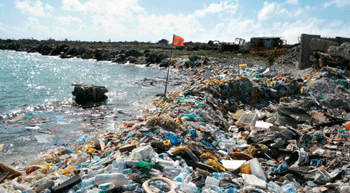Under the World Bank aided project Automatic Water Quality Monitoring has been setup under the NGRBA Project for the river Ganga at an estimated cost of Rs 94.45 crore approximately.
Real time data networks for water management are becoming standard practice around the world. There is a growing acceptance that traditional grab sampling is unlikely to provide a reasonable estimate of the spatial and temporal variability in water quality at a particular site. Integrated Water Quality Monitoring Network (WQMN) will need to have following categories of designated stations (Trend, Impact, Background stations).
Under the World Bank aided project Automatic Water Quality Monitoring has been setup under the NGRBA Project for the river Ganga at an estimated cost of Rs 94.45 crore approximately. The network will consist of 113 stations at critical locations along the main stem of the river. These stations will be located at:
- Upstream and downstream of major urban areas
- On major tributaries upstream of the confluence with the Ganga
- Downstream of Sewerage Treatment Plants (STPs)
- In major nallahs
- Downstream of industrial areas
- At intakes of drinking water treatment plants
- At important bathing ghats
This project focuses on the main stem of the Ganga River in the states of Uttarakhand, Uttar Pradesh, Bihar, Jharkhand and West Bengal with the following objectives;
- To assess nature and extent of pollution
- To understand the environmental fate of different pollutants.
- To evaluate effectiveness of pollution control measures in place.
- To evaluate water quality trend.
- To assess the fitness of water for different uses.
This project is expected to provide a state-of-the-art, real-time picture of water quality of river Ganga through the real time data on predefined 20 parameter and acquire the data from all the 113 stations for the all predefined parameters such as ammonia, BOD, COD, BTX chloride, DO, DOC, EC, fluoride, nitrate, hydrogen sulfide, pH, potassium, TOC, TSS turbidity, colour, temperature nitrites and water level. The Executing Agency of this project is the NGRBA Cell of CPCB for implementing the Automatic Water Quality Monitoring System. Real time data, collected at an interval of fifteen minutes will be transferred to the central repository or data server or RDBMS though the GSM or GPRS telemetry link. The data server will be supported with the mechanism to feed real data and processed data. The filtered and calibrated data will be analysed and process in the desired form to feed in the NGRBA Ganga Knowledge Centre Portal and also other websites or portals or mobile applications. All the data that is delivered will be validated by an audit contractor in order to qualify for purchase. The audit contractor will perform continuous field inspections of the equipments and sensors in each station. In addition to the automatic 113 station, NGRBP proposes to monitor water quality manually in 134 stations along the main stem of river Ganga. Bio-monitoring to evaluate the impact of pollutants on the wholesomeness of the aquatic ecosystem is also proposed to involve community monitoring.
Source: National Mission for Clean Ganga



Leave a Reply
You must be logged in to post a comment.